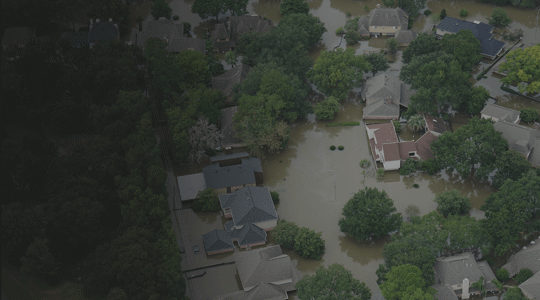Hurricanes & Tropical Storms Are Both Types of Tropical Cyclones
A tropical cyclone is a type of storm that originates over tropical or subtropical waters. It is characterized by a rotating system of clouds and thunderstorms, which rotate counterclockwise in the Northern Hemisphere. Hurricanes and tropical storms are two of four different types of tropical cyclones.
The four types of tropical cyclones are:
- Tropical depressions, which have maximum sustained wind speeds of 38 mph or lower.
- Tropical storms, which have maximum sustained wind speeds of 39 to 73 mph.
- Hurricanes, which have maximum sustained wind speeds of 74 mph or greater.
- Major hurricanes, which have maximum sustained winds of 111 mph or greater.
When a hurricane or tropical storm is severe enough, it will be named. Storms are given short and easy-to-remember names to “avoid confusion and streamline communications,” according to the National Oceanic and Atmospheric Administration (NOAA). This practice has been in place since the 1950s, and the World Meteorological Organization (WMO) is responsible for naming tropical storms and hurricanes with a list that’s used on a six-year rotation. Each year’s list contains 21 names; they are applied to storms alphabetically according to the time at which the tropical storm or hurricane develops. Names will be removed from the list if a storm causes a significant amount of death and destruction.
The official Atlantic hurricane season lasts from June 1 through November 30 of each year. In 2022, NOAA predicts that there will be 14 to 21 named storms. 6 to 10 of these tropical storms are expected to develop into hurricanes; 3 to 6 are expected to be major hurricanes.
What Is a Tropical Storm?
When a tropical cyclone has sustained wind speeds (lasting an average of at least one minute) of at least 39 miles per hour, it will be considered a tropical storm. This is also the point at which a storm will be named. The tropical storm designation lasts until sustained winds reach 74 miles per hour or greater, at which point the storm is considered a hurricane.
Tropical storms can cause considerable damage when they make landfall. Wind and water are the parts of a tropical storm that are likely to cause the most damage, leading to property damage, mudslides, heavy rain, flying debris, and large waves and swells. Tropical storms have caused billions of dollars in damage in the Southeastern United States over the past 50 years.
What Is a Hurricane?
A hurricane is a tropical cyclone with sustained winds of 74 miles per hour or greater. Hurricanes are classified by category according to the Saffir-Simpson Hurricane Wind Scale.
The standard hurricane categories are as follows:
- Category 1 Hurricane: sustained winds of 74 to 95 mph
- Category 2 Hurricane: sustained winds of 96 to 110 mph
- Category 3 Hurricane: sustained winds of 111 to 129 mph
- Category 4 Hurricane: sustained winds of 130 to 156 mph
- Category 5 Hurricane: sustained winds of 157 mph or greater
A major hurricane is any storm classified as Category 3 or greater.
Tropical Storms vs. Hurricanes
The key difference between tropical storms and hurricanes is their sustained wind speed. Hurricanes are tropical cyclones with sustained winds of at least 74 miles per hour, while tropical storms have sustained winds of 39 to 73 miles per hour. Because of their higher wind speeds, hurricanes are more destructive than tropical storms. Major hurricanes, when they make landfall, are the most destructive.
Especially living in the Gulf Coast, you understand how important it is to have coverage for hurricanes and tropical storms. In most cases, you should be covered by your insurance in the event of a tropical storm or a hurricane, but sometimes insurance agencies withhold payments that rightfully belong to policyholders.
Insurance companies should honor the full value of claims. When they fail to do so, Arnold & Itkin is ready to step in to level the playing field. Call us now at (888) 493-1629 to learn more about how we can help you.
